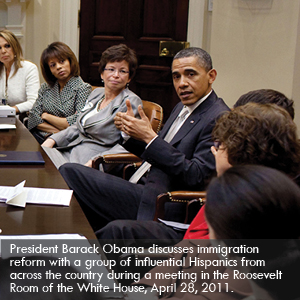
|
Although the Administration is not likely to crow about targeting unauthorized workers, the reality is that tens of thousands of unauthorized workers have been displaced from jobs now permanently occupied by authorized workers in multiple industries nationwide.
By replacing raids with Form I-9 inspections, the government has exponentially increased their capacity to engage more employers and establish a continued virtual presence with those employers to bar further employment of unauthorized workers … and they have. Employers in industries known to employ unauthorized workers are getting hit hard.
Because the fines generated from these inspections support the program, and because the government is obligated to “level the playing field” to prevent unfair competitive advantage between employers relating to labor, this enforcement tactic is not going away. In fact, if government efforts to protect the records relating to employers inspected fail and fall into the public domain, demands on the program will likely escalate. The results will be compelling and unavoidable.
Another unanticipated phenomenon has been the insurgence of states into immigration-enforcement policy that has led to a dramatic expansion of the E-Verify program by requiring employers in their states to use the employment verification system.
A few years ago E-Verify was a small and quiet, voluntary employee-verification system that flew under the radar. It was harmless. Only employers that wanted to use it enrolled in the program, and despite claims to the contrary, it did not bar employment of unauthorized workers. Since it was so small, invisible and inconsequential, nobody cared.
Not anymore.
As states have clamored onboard, E-Verify has come under increasing scrutiny and faces great challenges to keep up with public demand and expectations. In effect, state governors and legislators have seized control of the expansion and implementation of E-Verify.
In the process, the government was forced to acknowledge that E-Verify was systematically authorizing the employment of unauthorized workers erroneously because the system could not detect identity fraud. They vowed improvements to fix that vulnerability.
Regardless of political agendas and bureaucratic maneuvering, as the program grows and becomes subject to even more scrutiny, the government will have to stop authorizing the employment of unauthorized workers. E-Verify will get fixed and is here to stay.
The bottom line is that stranglehold the government has had on worksite enforcement for decades is being wrested away from them by external forces.
Although these enforcement programs will be challenged aggressively by immigration-reform advocates and others, Pandora’s Box has been opened, and employers will continue to see an acceleration of activity focused on barring unauthorized workers from employment.
Mark Reed, CEO of BMS, was the highest-ranking career government official within the Immigration and Naturalization Service (INS) during his career. At retirement, Mark directed border patrol, investigation, detention and removal, adjudication, and inspection operations from the northern to southern U.S. borders. Today as head of BMS, Mark is a knowledgeable and respected governmental insider. He advises many large companies in the areas of immigration compliance, policy and training. He also has a unique view into the world of key policy initiatives dealing with immigration issues and policy trends. For more information, please contact him at (520) 529-8750 or at mailto:mreed@teambms.com.




Report Abusive Comment